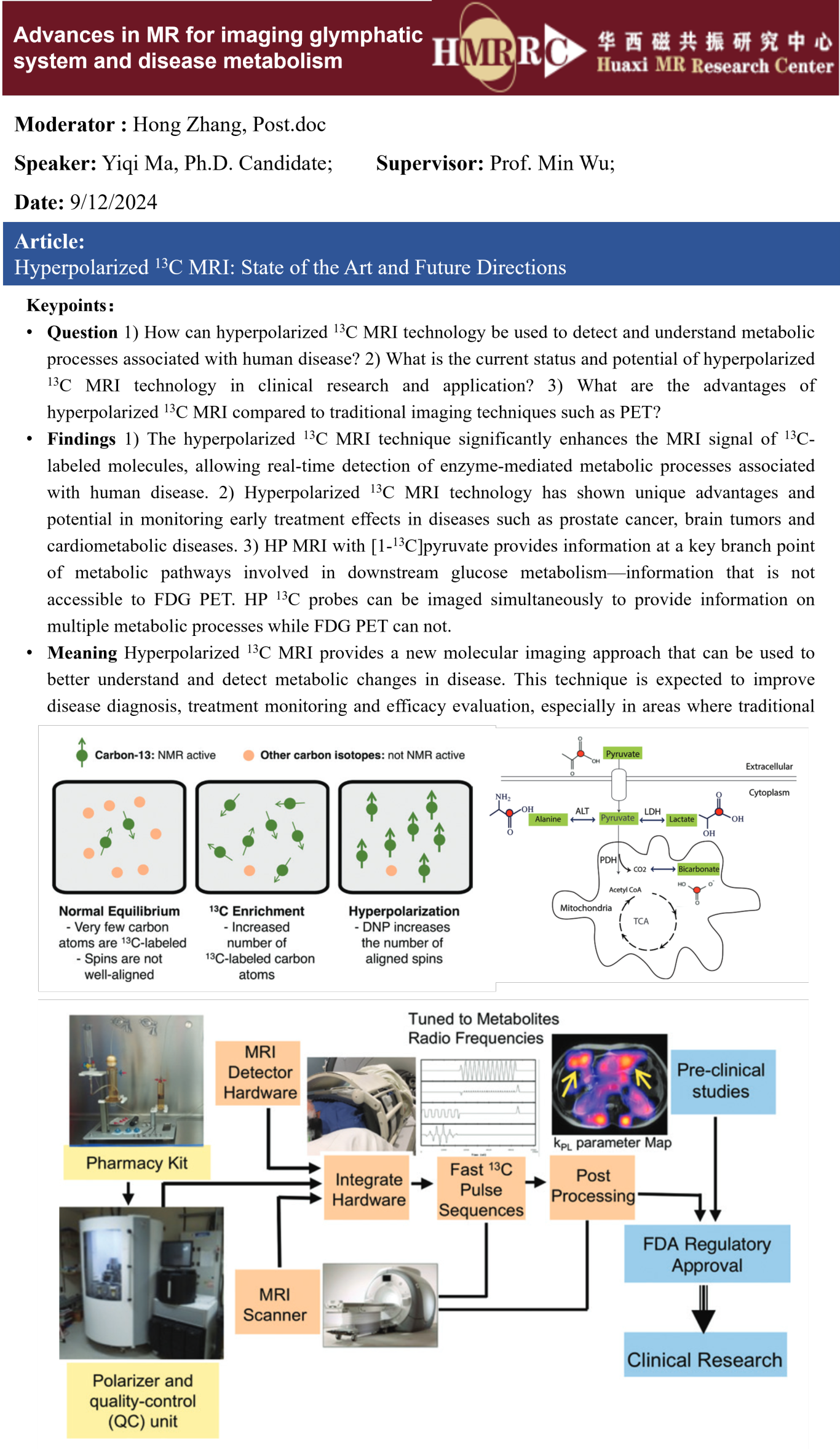
Advances in MR for imaging glymphatic system and disease metabolism.
Topic: Advances in MR for imaging glymphatic system and disease metabolism
Moderator: Hong Zhang, Post.doc
Date: 9/12/2024, 14:00
Location: The lab of HMRRC (10011, the 8th Teaching Building)
Speaker 1: Yiqi Ma, Ph.D. Candidate
Title: Hyperpolarized 13C MRI: State of the Art and Future Directions

Keypoints:
Speaker 2: Wanting Li, M.M. Candidate
Title: Glymphatic system dysfunction predicts amyloid deposition, neurodegeneration, and clinical progression in Alzheimer's disease

Keypoints:
Question: Can the dysfunction of the glymphatic system predict amyloid deposition, neurodegeneration, and clinical progression in Alzheimer's disease?
Findings: This study suggests that glymphatic impairment indicated by the ALPS index may occur before significant Aβ deposits, and predict amyloid deposition, neurodegeneration, and clinical progression in AD. The analysis along the perivascular space (ALPS) index is reduced in patients with Alzheimer's disease (AD) dementia, prodromal AD, and preclinical AD. Lower ALPS index predicted accelerated amyloid beta (Aβ) positron emission tomography (PET) burden and Aβ-positive transition. The decrease in the ALPS index occurs before cerebrospinal fluid Aβ42 reaches the positive threshold. ALPS index predicted brain atrophy, clinical progression, and cognitive decline. Aβ PET and brain atrophy mediated the link of ALPS index with cognitive decline.
Meaning: This study demonstrates for the first time the predictive effect of the ALPS index on amyloid deposition, brain atrophy, clinical progression, and cognitive decline in AD, and the mediating effect of amyloid and neurodegeneration on the glymphatic–cognitive decline association.